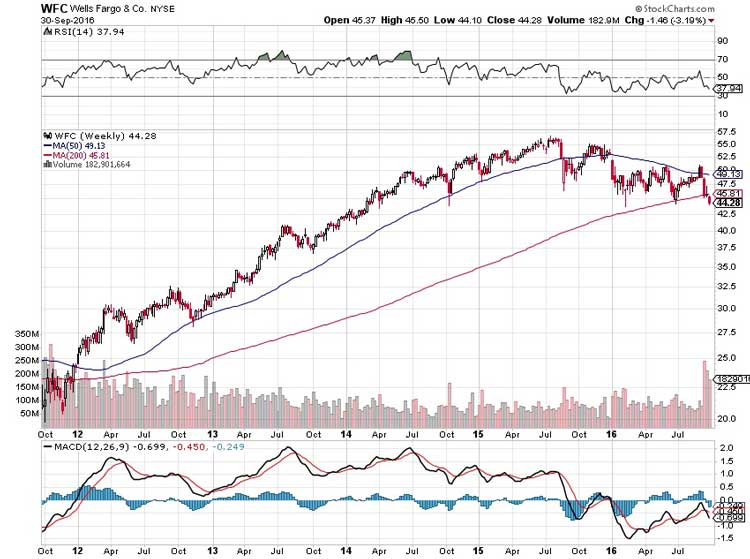Conspiracy theorists are often derided by the mainstream as “kooks” who have no framework of reality. This is especially true when the conspiracy involves a wide-reaching, international cartel. Yet what Wells Fargo & Co. (NYSE:WFC) did essentially confirmed all the suspicions people — whether conspiracy theorists or not — have about big banking. It also happened to be just about the worst thing a company could do short of physical assault.
By now, we’re all familiar with the controversy. According to U.S. News, WFC “employees created 2 million phony credit card and bank accounts for customers without their consent to boost sales figures and make more money.” As a result, the bank fired 5,300 of its employees, yet the one sticking point is CEO John Stumpf. Many people would like to see him face accountability, perhaps even criminal charges.
The sentiment is easy to appreciate, and even easier to support. Why should the “little guys” always take the brunt of the blame, when this charade has been occurring undoubtedly with management’s knowledge? After all, finance is about balanced numbers. It’s easy to spot a discrepancy when your debits and credits don’t match. That situation is exacerbated when it allegedly involves over 5,000 co-conspirators!
There are two immediate takeaways here. First, just how poorly do big banks think of their everyday, retail clients? The architects and perpetrators of this — let’s be honest — crime refused to acknowledge the harm they were causing to millions of families. Second, they reiterated the general public’s fear that big banking is a highly sophisticated con. In a world of high-frequency trading and inexplicable “flash crashes,” Wells Fargo’s debacle will do nothing to ease such concerns.

As an analyst, my frustration stems from trust. Among the big banks, Wells Fargo was the most transparent and stable. They refused to entrench themselves so tightly with high-risk junk loans during the era of the subprime mortgage crisis. That discretion paid off dividends when several of Wells Fargo’s competitors simply imploded. But that respect has gone out the window. Both analysts and investors should now view WFC stock with a healthy dose of caution.
The selloff in share valuations has been ugly, and I believe it will continue to worsen. Already, the year-to-date loss for WFC stock exceeds 18%. This is well below its big bank peers, particularly Bank of America Corp. (NYSE:BAC) and Citigroup Inc. (NYSE:C), which have been the laggards for the current decade. That says a lot, considering how embattled Bank of America was, and to some extent, still is.
The technical situation for WFC, as expected, is quite poor. While the other big bank stocks are trying to form a support channel, WFC — with its recent losses — is clearly forming a bearishly-tilted trend line. If it doesn’t reverse its trajectory quickly, more long-term shareholders are likely to panic, and salvage what they can. Should that occur, who knows how far the once trusted bank can fall?
I, for one, am not planning to find out the hard way.
